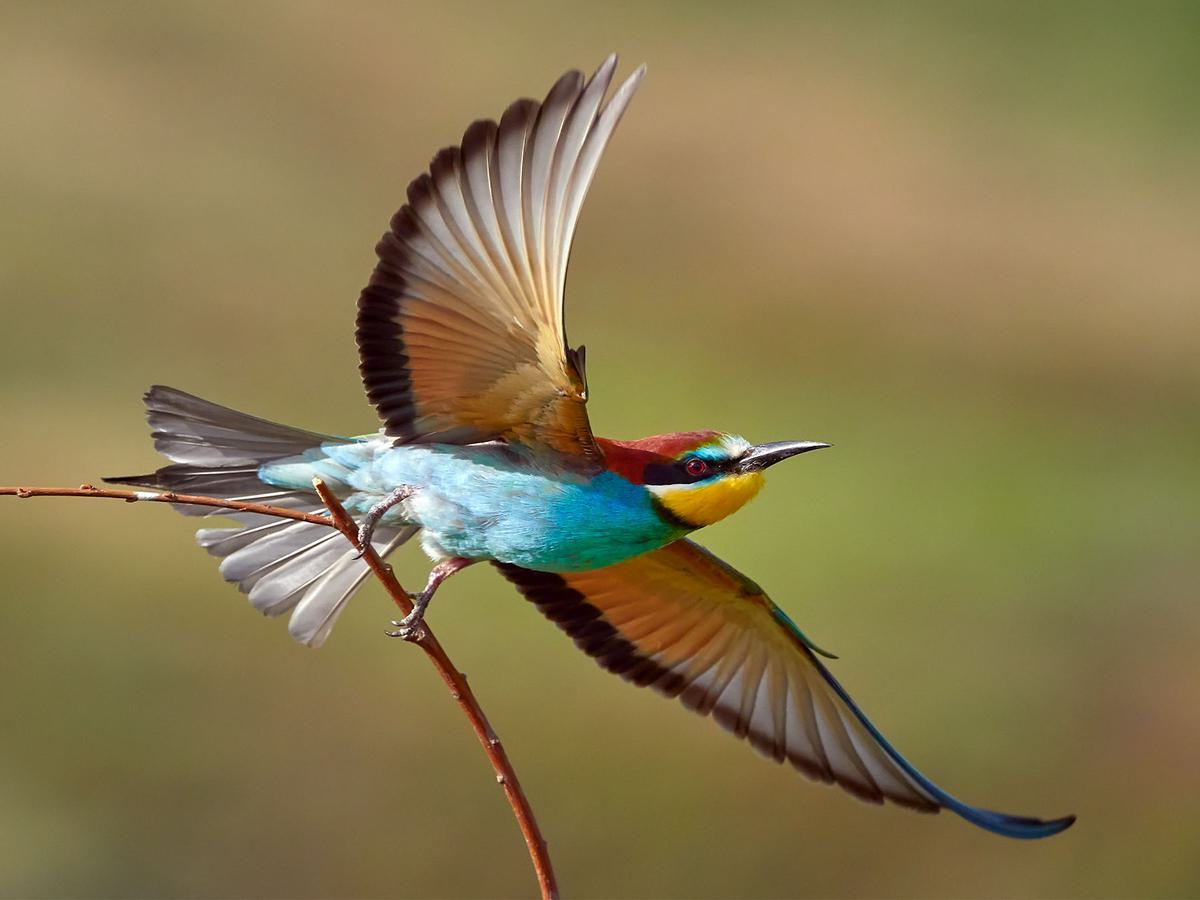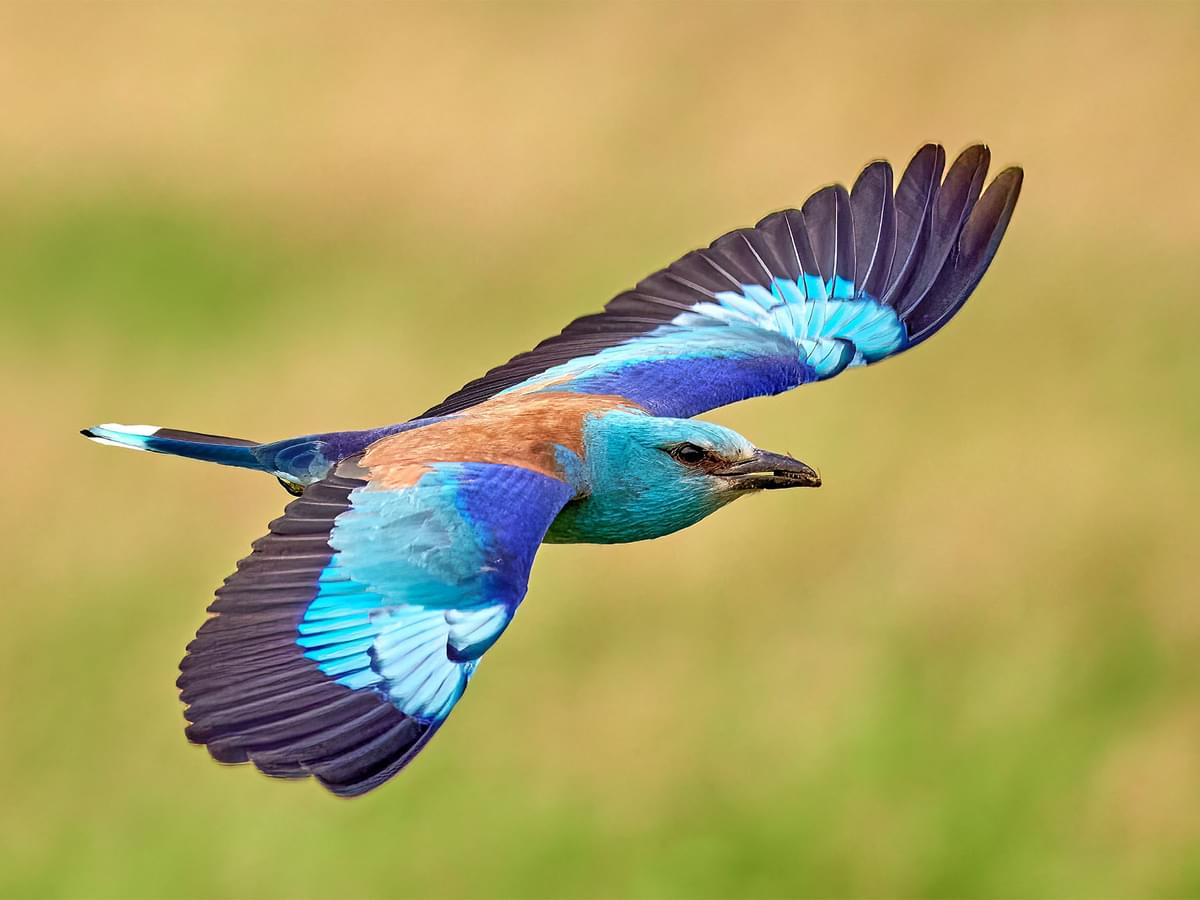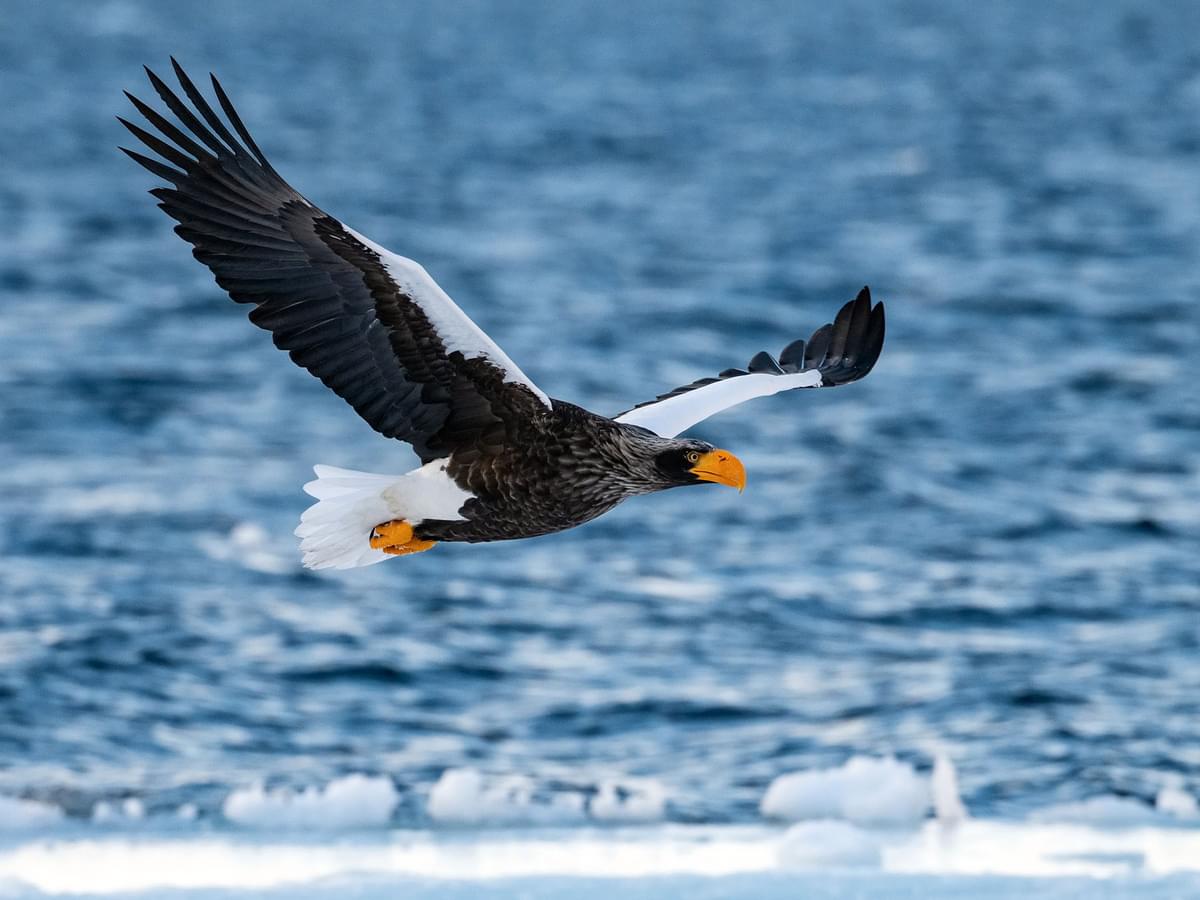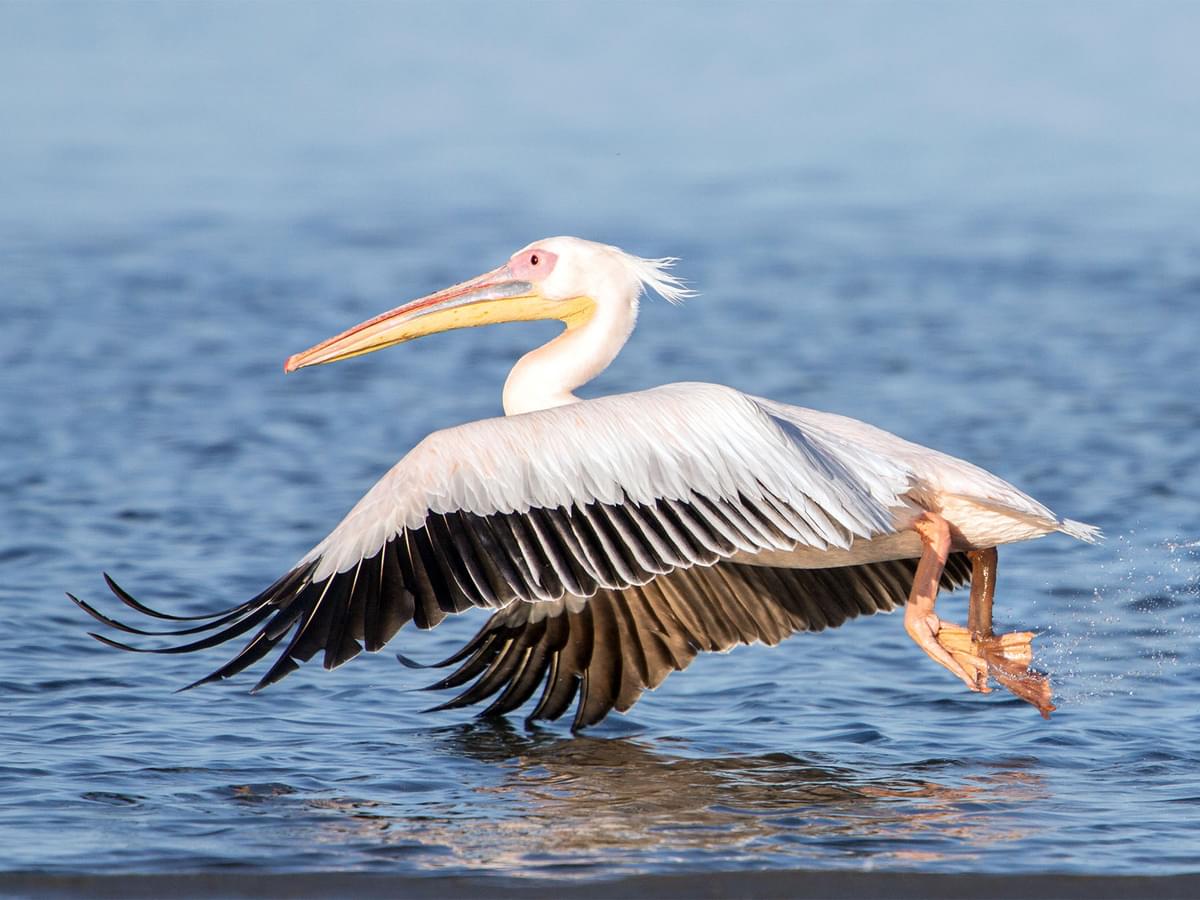Wings and Flight
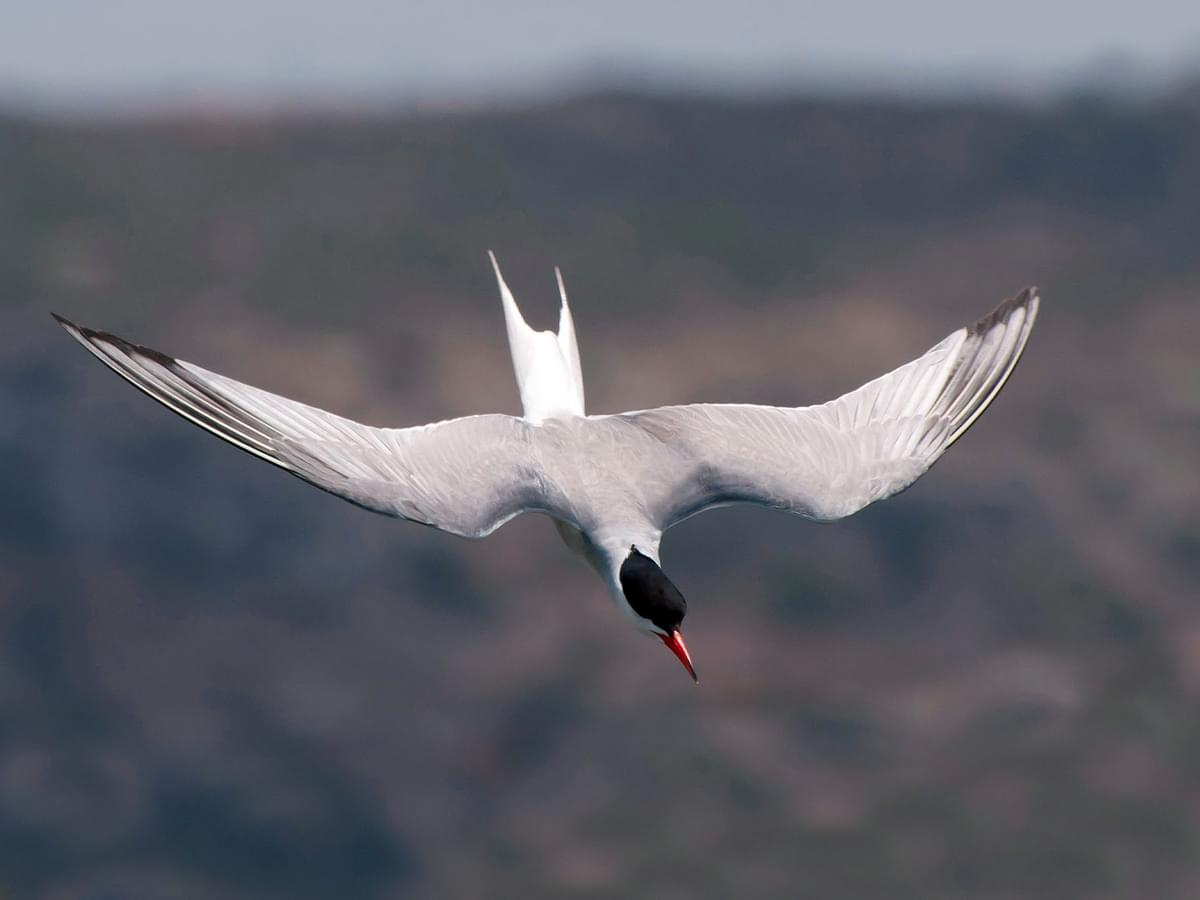
From the first clumsy flights of their theropod ancestors to the acrobatic abilities of Swifts that spend most of their lives in the skies above, birds have evolved to master flight as a means of catching prey, showing off their genetic fitness, moving between foraging and roosting sites, and even escaping the colder seasons.
Avian flight has long fascinated humankind, both as an awe-inspiring natural spectacle and an opportunity to imitate nature’s technology. In fact, birds employ many of the same fundamental flight mechanics as we do with our own airplanes.
Studying bird flight also teaches us more about a bird’s evolution and its way of life, adding to our body of avian knowledge and, hopefully, helping us make better decisions in protecting threatened birdlife.
This article introduces the anatomy and mechanics of bird flight. Read along as we uncover their gravity-defying secrets.
The Architecture of Flight - Wing Anatomy Explored
Bone Structure and Arrangement
Birds’ wings are modified forelimbs or arms that have evolved for flight. Each wing consists of several bones, which are comparable to the bones of our own shoulder, upper arm, forearm, and hand.
Continue reading to learn about the major bones of the bird wing.
Humerus
The humerus is the major bone of the upper wing. It is connected to the coracoid and the scapula of the pectoral girdle.
Ulna and radius
The ulna and radius are the bones of the bird’s ‘forearm.’ They are connected to the humerus. The position of these bones corresponds roughly with the secondary feathers of the wing.
Radiale and ulnare
These small ‘wrist’ bones are located between the forearm and the hand bones.
Carpometacarpus
The carpometacarpus is a larger bone that consists of fused carpal (wrist) and metacarpal (hand) bones. Most of the primary flight feathers are found along this region of the wing.
Phalanges
Birds still possess (finger bones), although they have just three digits on each wing. The first digit (thumb) consists of two phalanges and is known as the Alula or ‘winglet.’ This moveable digit has a few of its own feathers and can be used to create extra lift.
Muscle Groups and Their Functions
Bird flight is powered by various muscles, although the pectoralis major and supracoracoideus that attach to the humerus are the largest and most important.
The outer pectoralis muscles are about five times as large as the supracoracoideus and contract to power the downstroke, creating lift. The supracoracoideus are located behind the pectoralis major and act like pulleys to lift the wing before the next downstroke.
Birds also have several smaller muscles attached to the wing bones that control wing shape and orientation. These include the biceps, triceps, flexors, and extensors.

A Common Swift. Birds’ wings are modified forelimbs or arms that have evolved for flight
Feathers – The Wings' Sails
Types and Functions of Flight Feathers
Feathers are highly specialized structures unique to avians and used for everything from keeping warm to communicating with other birds. Of course, they are also required for flight, and birds have various flight feathers (remiges) and contour feathers on their wings.
Remiges/ Flight Feathers
Primary feathers
The primary feathers are the largest flight feathers of the bird's wing and are located toward the wing tip. Most birds have nine or ten elongated primary feathers on each wing, and these function to provide lift but are also individually moveable and are vital for maneuverability in flight.
Secondary feathers
Secondary feathers are smaller than primaries and located along the bottom edge of the bird’s wing, along the ulna bone. These shorter and rounder feathers provide lift but are not mobile. The number of secondary feathers on each wing varies between species, with some having less than ten and others having over thirty on each wing.
Other Wing Feathers
Tertials
Birds have three or four tertial feathers that grow along the area of the humerus of the upper wing. They are not used in flight but protect the other flight feathers when the wing is closed.
Coverts
Coverts are contour feathers that cover the base of the flight feathers of the wings. They are not flight feathers, although they may help to smooth airflow. Birds have both upper wing and underwing coverts.
Feather Properties
Feathers combine a number of vital properties. They must be extremely light yet strong, rigid in some directions but flexible in others, and highly durable to last between molts.
Each flight feather consists of a calamus or quill, which is the portion of the main ‘shaft’ that is embedded in the follicle. The external part of this shaft is called the rachis, and it is lined with branches called barbs.
Each barb is lined with even smaller structures called barbules that hook into each other, causing these stiff feathers to zip together into a rigid surface.

A White-tailed Eagle. The primary feathers are the largest flight feathers of the bird's wing and are located toward the wing tip
The Dynamics of Flight
Lift and Thrust Creation
Bird flight is a wonderfully choreographed form of locomotion that creates both upward lift and forward thrust.
To move in their desired direction and fight the ever-present effect of gravity, birds must reduce the amount of air resistance on the upstroke, and they do this by changing the angle of their flight feathers and by rotating and closing the wing somewhat.
As you can tell, bird flight and aerodynamics are all about physics, and the thrust and lift gained from pushing against the air are great examples of Newton’s third law of motion.
Meanwhile, the pressure differential and resulting lift caused by the curved upper side of a bird’s wing highlights Bernoulli’s principle, which is also used in the design of aircraft wings.
Flight Modes
Not all birds fly in the same way, and differences in their anatomy and objectives often determine the way they move their wings and how they move through the air. Let’s take a brief look at some of the major avian flight modes.
Flapping
Flapping is the typical form of flight where birds generate thrust and lift by flapping their wings. This flight mode requires a lot of energy, but it is an efficient means of locomotion for most bird species and in most weather conditions.
Gliding
Gliding uses far less energy than flapping, so many birds alternate between flapping and gliding as they move through the air.
Some birds, like Albatrosses, have evolved specialized wings and flight behaviors that allow them to fly for long periods without flapping their wings, although this requires favorable weather conditions.
Soaring
Raptors and many other large birds use the free lift of vertical air currents to soar through the air without flapping. These birds tend to climb in a circular flight path, using rising thermals of warm air or wind diverted upwards by hills and mountains.
Hovering
Some birds can remain in the same place relative to the ground by hovering. Hummingbirds use this technique to feed on nectar without perching, while Kestrels and some Kites will hover above the ground when watching for rodents and other prey below.

A Common Kestrel. Kestrels and some Kites will hover above the ground when watching for rodents and other prey below
Evolutionary Adaptations for Flight
Wing Loading and Aspect Ratio
Wing size and shape play an essential role in the speed, agility, and flight mode that birds use. Continue reading to learn more about the relationship between bird wing size and flight.
Wing-loading
One of the most important factors affecting flight performance is the size of the wing in comparison with the bird’s body. More specifically, wing loading describes the weight of the bird’s body divided by the area of its wings.
Barn Owls have very large wings that allow slow and silent flight. These birds have low wing loading.
In contrast, Guillemots and many other diving birds have very small wings relative to their weight. These birds have high wing loading and must flap their wings very fast to remain airborne.
Aspect Ratio
The aspect ratio describes the width-to-length ratio of the bird’s wing. Albatrosses and other birds with long, narrow wings have a high aspect ratio, which is great for gliding but awkward for flapping.
Birds like Cooper’s and Sharp-shinned Hawks have short, broad wings, which are ideal for high-speed maneuvers but very inefficient for gliding.
Specialized Wing Types
Bird wings are often classified into four categories, depending on their shape. The various wing types are used differently, depending on factors like the bird’s habitat, movements, and foraging strategy.
Elliptical wings
House Sparrows and other songbirds have elliptical (oval) wings. This common wing type has a low aspect ratio and requires frequent flapping.
High lift wings
Golden Eagles and other heavy soaring birds have broad, high-lift wings with slotted primary feathers to provide the extra lift they need.

House Sparrows and other songbirds have elliptical (oval) wings

Golden Eagles and other heavy soaring birds have broad, high-lift wings with slotted primary feathers
High-speed wings
Many fast-flying birds, from Mallards to Alpine Swifts, have pointed high-speed wings. These wings combine high wing loading and high aspect ratio.
High aspect ratio/ gliding wings
Albatrosses and other large pelagic seabirds have very long, narrow wings for gliding long distances with very little energy output. Such long wings are difficult to flap, so these birds require windy conditions to power their flight.

A Mallard Duck. Many fast-flying birds, from Mallards to Alpine Swifts, have pointed high-speed wings

A Black Browed Albatross. Large pelagic seabirds have very long, narrow wings for gliding long distances with very little energy output
Flightlessness and Divergent Evolution
Less than one percent of the world’s birds are flightless. These species have diverged from the more typical mode of locomotion to specialize in either terrestrial (Ostriches, Rheas, Emus, etc.) or marine environments (Penguins, Flightless Cormorants, etc.).
In each case, natural selection has shaped their anatomy for a specialized niche where flight is unnecessary or even costly to the development of other anatomical features.
Penguins, for example, have evolved to use their wings as flippers for swimming, while the wings of Kiwis serve no important function and are reduced to tiny vestigial structures just an inch long.

A Darwin's Rhea. Less than one percent of the world’s birds are flightless
Summary
From backward-flying Hummingbirds to gliding Albatrosses, flying birds rely on specialized feathers and wing anatomy, impeccable timing, and the laws of physics and aerodynamics to get from A to B.
Their wing size and shape and their flight behaviors have evolved to suit their foraging and migratory habits, so you can tell a lot about a bird by observing its wings and the way they’re used in flight.
Understanding the wonders of avian flight enriches our experience as birdwatchers, but it also offers key insights into the evolution and ecology of our feathered friends.
This kind of information helps us understand their needs better, so we can improve conservation efforts and ensure future generations can enjoy the spectacle of bird flight.
